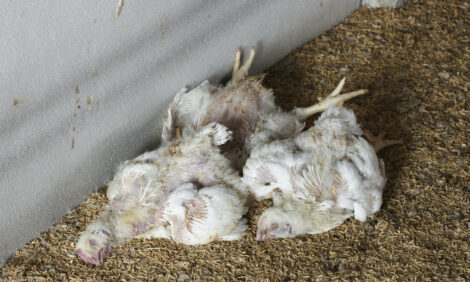



Nutriad Concludes 2016 Spain Maize Mycotoxin Survey
SPAIN - Multinational feed producer Nutriad, concluded its 2016 Mycotoxin Survey in Spain, which included 107 maize samples from different Spanish regions..jpg) All samples were collected almost immediately after the harvest from farms or animal feed production sites. More than 400 analyses were conducted to test for the occurrence of the 4 mycotoxins most frequently found in agricultural commodities intended for animal production. The survey provided an insight into the incidences of aflatoxins (Afla) – sum of aflatoxin B1, B2, G1 and G2, zearalenone (ZEN), deoxynivalenol (DON) and fumonisins (FUM) – sum of fumonisin B1 and fumonisin B2.
All samples were collected almost immediately after the harvest from farms or animal feed production sites. More than 400 analyses were conducted to test for the occurrence of the 4 mycotoxins most frequently found in agricultural commodities intended for animal production. The survey provided an insight into the incidences of aflatoxins (Afla) – sum of aflatoxin B1, B2, G1 and G2, zearalenone (ZEN), deoxynivalenol (DON) and fumonisins (FUM) – sum of fumonisin B1 and fumonisin B2.
The results showed that almost 48% and 29% of the maize samples were contaminated with FUM and DON, respectively. Only 4,7 % of the samples contained Afla and this low incidence of contamination was unexpected. The average concentrations of all recovered mycotoxins were medium (>LOQ but below EU recommendation levels). The highest concentration of DON detected in one of the samples reached 3721 μg/kg. Only 8,4% of the samples contained ZEN, a mycotoxin affecting fertility performance of all animal species. The ZEN average concentration reached 145 μg/kg which is high especially for sows and piglets. Unexpectedly, the results showed that the average concentration of DON was 821 μg/kg which is significant. Several samples were contaminated with 2 to 4 mycotoxins at the same time which may lead to synergistic interactions among them.
The Nutriad survey detected a low incidence of Afla, which was unexpected as there has been concerns in the Spanish market over high aflatoxin M1 levels in milk of dairy cows. Whilst the average of Afla1 detected in the positive samples was 4,7 μg/kg and the maximum concentration was 13 μg/kg, none of the samples exceeded the maximum EU permitted concentration of aflatoxin B1 (20 μg/kg).
The Nutriad 2016 mycotoxin survey concluded that this year’s harvest of maize in Spain was of medium quality (>LOQ but below EU recommendation levels) in terms of mycotoxin contamination which is comparable with the results from 2015. Based on the results of this survey conducted immediately after the 2016 harvest, the belief is that this year’s maize crop in Spain should not be automatically considered safe for inclusion into finished feed rations for all animal species and a degree of vigilance is prudent.
Stated Radka Borutova, Business Development Manager at Nutriad: “Vigilance is always advisable as cereals in animal feeds originate from many sources and some continental European cereals and South American soya harvested in 2016 have been shown to be contaminated with medium to high concentrations of mycotoxins. The last possible line of defense is the detoxification of mycotoxins in vivo. The addition of proven mycotoxin deactivators to animal feeds is a very common method to prevent mycotoxicosis and is an effective strategy to keep mycotoxin risk low under any and all conditions.”
NUTRIAD delivers products and services to over 80 countries through a network of sales offices and distributors. These are supported by 4 application laboratories and 5 manufacturing facilities on 3 continents. Find out more at nutriad.com








